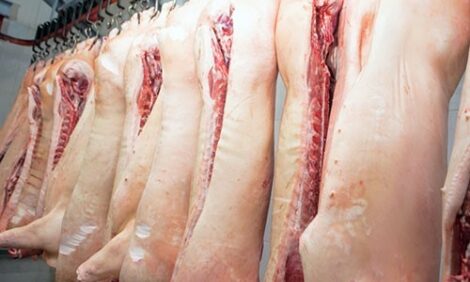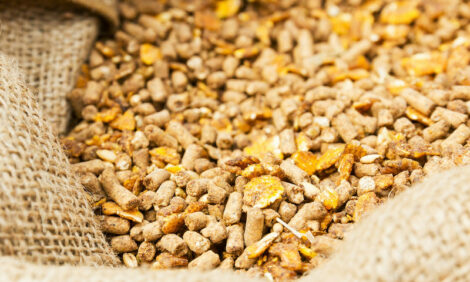|
Need a Product or service?
|
|

Ron Plain |
Packers were able to pay a higher price for hogs last year because the average hog cutout value was 10% higher than in 2002.
Just how processors and retailers were able to pay higher prices for wholesale pork cuts is a bit of a mystery. The retail price of pork was virtually the same in 2003 as 2002. Monthly grocery store surveys by the Bureau of Labor Statistics said retail pork prices were only 0.04% higher in 2003 than in 2002. USDA's new scanner data series indicated 2003 retail pork prices were 2.0% higher than in 2002.
Apparently, processors, distributors and retailers of pork decided to accept a smaller margin for what they did with pork in 2003. The pork wholesale-retail price spread was below year-earlier levels for 12 consecutive months from November 2002 through October 2003. Prolonged declines in the wholesale-retail price spread are usually associated with periods of reduced pork production. For example, the wholesale-retail price spread was below year-ago levels for 12 months in a row from June 1995 through May 1996. During this period, commercial pork production was down 5.4% from the year before. It was below year-earlier levels for 10 of 12 months from August 1999 through July 2002. During this period commercial pork production was down 1.6%. But, commercial pork production wasn't down during the November 2002 to October 2003 period. It was up 0.6%.
This apparent belt-tightening by processors and retailers was unique to pork. Beef retailers widened their margins slightly in 2003, despite a 3.2% decline in commercial beef production.
There is another explanation for what happened to pork wholesale-retail margins last year - the data is wrong. There has been a significant increase in the amount of "pumped" pork that is being marketed. Adding water to pork does three things: it improves the juiciness of the cooked product (which is the primary reason for pumping), it decreases the per-pound price (water is, after all, much cheaper than meat) and it increases the weight of the pork. Price surveys readily pickup the lower retail price but fail to note the increased weight of the pork. Until USDA re-estimates their carcass-retail weight conversion series, we won't know if my theory is correct.


















